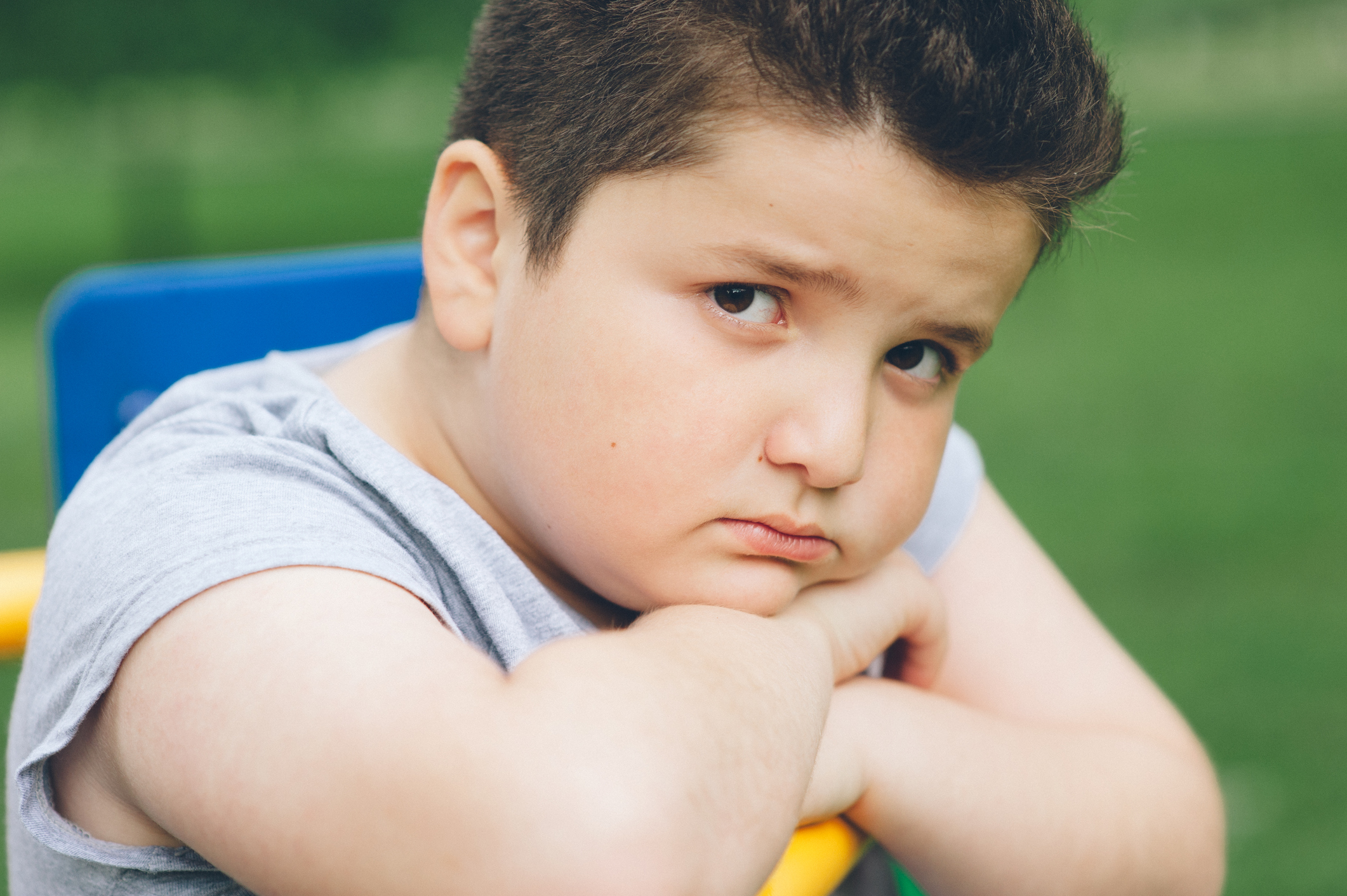From the moment a child is born, their relationships with their primary caregivers begin to shape the foundation of their behaviour and emotional development. These early relationships, often referred to as attachments, play a crucial role in how children perceive the world, regulate their emotions, and interact with others. Understanding the influence of attachment is vital for parents, caregivers, and anyone involved in the upbringing of children.
Attachment theory, developed by psychologist John Bowlby, explains how the quality of early relationships impacts a child’s behaviour and future relationships. It emphasizes the importance of a secure attachment, wherein a child feels safe, loved, and supported by their caregivers. This secure base allows children to explore the world, develop social skills, and form healthy relationships.
Primary caregivers, such as parents or guardians, play a significant role in shaping attachment. Their responsiveness to a child’s needs, consistent care, and emotional availability contribute to the establishment of a secure attachment. Through nurturing, comforting, and providing guidance, caregivers lay the groundwork for a child’s emotional well-being.
While primary caregivers play a crucial role, siblings also contribute to a child’s attachment. Sibling relationships offer opportunities for peer-like interactions, conflict resolution, and emotional support. The dynamics between siblings can either reinforce or challenge a child’s attachment patterns, influencing their behaviour and social interactions.
As children grow, their social circle expands to include friendships. Early friendships can further shape attachment patterns. Positive peer relationships provide children with the opportunity to develop emotional regulation, empathy, and social skills. Conversely, negative experiences in friendships can lead to insecure attachment and behavioural challenges.
Attachment styles, which develop based on early relationships, have a profound impact on a child’s behaviour. Children with secure attachment tend to display higher levels of self-confidence, emotional regulation, and social competence. On the other hand, insecure attachment styles, such as avoidant or anxious attachment, can lead to difficulties in emotional regulation, social interactions, and problem-solving skills.
These attachment styles influence various aspects of a child’s behaviour. Signs of secure attachment include seeking comfort from caregivers, exhibiting trust and independence, and forming healthy relationships with peers. In contrast, insecure attachment may manifest as clinginess, fear of exploration, difficulty in forming close relationships, or aggressive behaviour.
The influence of attachment styles extends beyond childhood and can shape adult relationships. Attachment patterns established in early years often persist into adulthood, impacting romantic relationships, friendships, and even parenting styles. Understanding these patterns can help individuals navigate their relationships and work towards healthy attachments.
In this blog post, we will explore the various ways in which early relationships shape a child’s behaviour. We will delve into the role of primary caregivers, the impact of sibling relationships and early friendships, and how attachment styles influence emotional and social behaviour. Furthermore, we will provide strategies for fostering healthy attachments in children and discuss how attachment issues can affect adult relationships.
By understanding the profound influence of early relationships on a child’s behaviour, we can create nurturing environments that promote emotional well-being, healthy social interactions, and positive relationships throughout their lives.
Understanding the Basics: Attachment Theory and Its Importance
Attachment theory, developed by psychologist John Bowlby in the 1950s and 1960s, provides a framework for understanding the importance of early relationships in shaping a child’s behaviour. It emphasizes the innate need for human connection and the impact of these connections on a child’s emotional and social development.
At the core of attachment theory is the concept of a secure attachment. A secure attachment is formed when a child feels safe, loved, and supported by their primary caregiver. This secure base allows children to explore the world, take risks, and develop a sense of self-confidence.
Attachment theory highlights the significance of early experiences in shaping a child’s internal working models of relationships. These internal working models are mental representations of how individuals perceive themselves and others in relationships. They influence a child’s expectations, beliefs, and behaviours in future relationships.
The primary caregiver, typically the parent, plays a crucial role in the establishment of a secure attachment. Through responsive and sensitive caregiving, parents create a secure base from which the child can explore and return for comfort and support. Building trust, providing consistent care, and meeting the child’s emotional and physical needs are essential in fostering a secure attachment.
The quality of the caregiver-child relationship is determined by factors such as sensitivity, warmth, and responsiveness. Caregivers who consistently respond to a child’s cues, provide emotional support, and engage in positive interactions contribute to the development of a secure attachment. On the other hand, caregivers who are inconsistent, unresponsive, or neglectful may lead to insecure attachments.
In addition to the primary caregiver, siblings also play a role in attachment formation. Sibling relationships offer opportunities for peer-like interactions, emotional support, and conflict resolution. Positive sibling relationships can reinforce secure attachment patterns, while negative or dysfunctional sibling dynamics can contribute to insecure attachment.
Understanding attachment theory is crucial for parents, caregivers, and professionals working with children. It provides insights into the significance of early relationships and highlights the importance of creating nurturing environments. By recognizing the impact of attachment on a child’s behaviour, caregivers can provide the necessary support and promote healthy emotional development.
In the next sections, we will explore in further detail the role of primary caregivers in influencing attachment, the impact of sibling relationships, and the effects of early friendships on attachment patterns. By understanding these dynamics, we can gain a deeper understanding of how early relationships shape a child’s behaviour and lay the foundation for their future social and emotional well-being.
The Role of Early Relationships in Attachment
Early relationships play a fundamental role in the formation of attachment patterns in children. These relationships, particularly with primary caregivers, siblings, and early friends, shape the child’s understanding of themselves, others, and the world around them. In this section, we will explore how these relationships influence attachment and subsequent behaviour.
How Primary Caregivers Influence Attachment
Primary caregivers, often parents or guardians, have a significant impact on a child’s attachment formation. Their responsiveness, consistency, and emotional availability lay the foundation for secure attachment.
- Responsive Caregiving: When caregivers promptly respond to a child’s needs, such as soothing them when they’re upset or providing comfort when they’re anxious, it builds trust and security. This responsiveness allows the child to feel understood, valued, and emotionally supported.
- Consistent Care: Consistency in caregiving routines, such as feeding, bathing, and bedtime, helps children develop a sense of predictability and stability. It creates a safe and secure environment that fosters trust and emotional well-being.
- Emotional Availability: Caregivers who are emotionally available provide the child with a safe space to express their emotions, thoughts, and concerns without judgment. This emotional attunement supports the development of a child’s emotional regulation and empathy.
The Impact of Sibling Relationships on Attachment
Sibling relationships can significantly influence attachment patterns in children. These relationships offer unique opportunities for social interaction, emotional support, and conflict resolution.
- Peer-like Interactions: Siblings often engage in peer-like interactions, which allow children to develop social skills, negotiation abilities, and perspective-taking. Positive and cooperative interactions between siblings can reinforce secure attachment patterns.
- Emotional Support: Siblings can provide emotional support during challenging times, serving as a source of comfort, understanding, and companionship. This support can contribute to the development of a secure attachment by fostering a sense of safety and belonging within the family.
- Conflict Resolution: Sibling conflicts provide children with opportunities to learn problem-solving skills, compromise, and empathy. Effective conflict resolution within sibling relationships can promote secure attachment by teaching children how to navigate interpersonal challenges.
Effects of Early Friendship on Attachment Patterns
As children grow, their social circle expands to include friendships. Early friendships can further shape attachment patterns and influence behaviour.
- Emotional Regulation: Positive and supportive friendships can help children develop emotional regulation skills, as they learn to navigate the emotions and needs of others. This can contribute to the formation of secure attachment patterns.
- Social Competence: Early friendships provide a platform for social interactions, cooperation, and the development of social skills. Children who have positive early friendships tend to exhibit higher levels of social competence and the ability to form healthy relationships.
- Influence of Peer Attachment: Friendships can become an additional attachment figure for a child, especially in situations where the primary caregiver is unavailable or inconsistent. The quality of these peer attachments can impact a child’s overall attachment security.
Understanding the role of these early relationships is crucial in comprehending the developmental trajectory of attachment and subsequent behaviour. By recognizing the influence of primary caregivers, siblings, and early friendships, we can gain insights into how these relationships shape a child’s attachment patterns and set the stage for their emotional and social development.
How Attachment Styles Influence Behaviour
Attachment styles, which are formed based on early relationships, have a profound influence on a child’s behaviour. These styles reflect the child’s expectations, beliefs, and strategies for relating to others. In this section, we will explore how attachment styles influence behaviour in various domains, including emotional behaviour and social interactions.
Signs of Secure and Insecure Attachment
- Secure Attachment: Children with secure attachment tend to display certain behaviours and characteristics:
- Seek comfort and support from their caregiver when faced with distress or uncertainty.
- Exhibit confidence in exploring their environment, knowing they have a secure base to return to.
- Show trust in others and have positive expectations of relationships.
- Demonstrate emotional regulation and the ability to manage stress effectively.
- Insecure Attachment: Insecure attachment can manifest in different forms:
- Avoidant Attachment: Children with avoidant attachment may display the following behaviours:
- Avoid seeking comfort or support from caregivers, appearing self-reliant.
- Show little distress when separated from caregivers.
- Exhibit a tendency to suppress or dismiss their emotions.
- Anxious Attachment: Children with anxious attachment may exhibit the following behaviours:
- Display clinginess and heightened anxiety when separated from caregivers.
- Seek excessive reassurance and attention from caregivers.
- Struggle with emotional regulation, experiencing intense emotions and difficulty self-soothing.
- Disorganized Attachment: Some children may exhibit a disorganized attachment style, which includes:
- Inconsistent and unpredictable behaviours, alternating between seeking and avoiding caregivers.
- Displaying signs of fear or confusion when faced with stressful situations.
- Difficulty with emotion regulation and forming stable relationships.
Impact of Attachment Styles on Emotional Behaviour
- Emotional Regulation: Securely attached children tend to have better emotional regulation skills, allowing them to manage and express their emotions appropriately. In contrast, insecurely attached children may struggle with emotional regulation, leading to difficulties in coping with stress and managing emotional reactions.
- Emotional Expression: Attachment styles influence how children express their emotions:
- Securely attached children are more likely to express a wide range of emotions openly and comfortably.
- Insecurely attached children may exhibit difficulties in expressing emotions, such as suppressing or exaggerating them, depending on their attachment style.
Influence of Attachment Styles on Social Behaviour
- Social Competence: Secure attachment is associated with higher levels of social competence, including the ability to form and maintain healthy relationships, empathy, and effective communication skills.
- Peer Interactions: Attachment styles can influence how children interact with peers:
- Securely attached children tend to establish positive and cooperative relationships with peers, displaying prosocial behaviours.
- Insecurely attached children may struggle with forming and maintaining peer relationships, exhibiting behaviours such as aggression, withdrawal, or difficulties in sharing and taking turns.
Understanding how attachment styles influence behaviour can provide valuable insights into a child’s emotional and social functioning. By recognizing the signs of secure and insecure attachment, as well as the impact on emotional behaviour and social interactions, we can better support children’s development and help them navigate healthy relationships.
Strategies to Foster Healthy Attachments in Children
Fostering healthy attachments in children is essential for their emotional well-being, social development, and overall life satisfaction. In this section, we will explore various strategies that parents, caregivers, and professionals can employ to support the formation of secure attachments in children.
The Importance of Responsive Parenting
- Sensitive Responsiveness: Being attuned and responsive to a child’s needs is crucial for building a secure attachment. This includes:
- Promptly responding to a child’s cues and signals.
- Providing comfort and reassurance when the child is distressed.
- Offering appropriate guidance and support during challenging situations.
- Emotional Availability: Being emotionally available involves:
- Creating a safe space for the child to express their emotions without judgment.
- Validating and acknowledging the child’s feelings.
- Engaging in open and supportive communication.
Creating a Safe and Trusting Environment
- Consistency and Predictability: Establishing consistent routines and predictable environments help children feel secure and develop a sense of trust. This includes:
- Maintaining consistent daily schedules.
- Providing a stable and predictable home environment.
- Setting clear boundaries and expectations.
- Physical and Emotional Safety: Ensuring a child’s physical and emotional well-being is vital for building a secure attachment. This involves:
- Creating a safe physical environment free from harm or danger.
- Protecting the child from any form of abuse or neglect.
- Cultivating a nurturing and supportive emotional atmosphere.
Promoting Social Interactions
- Encouraging Positive Peer Relationships: Facilitating opportunities for positive social interactions with peers can support the development of secure attachments. This includes:
- Organizing playdates or social activities with other children.
- Teaching and modelling appropriate social skills, such as sharing, taking turns, and conflict resolution.
- Providing guidance and support during peer interactions.
- Promoting Secure Relationships with Other Caregivers: Encouraging healthy attachments with other trusted caregivers, such as grandparents, relatives, or trusted friends, can broaden a child’s support network. This involves:
- Facilitating regular interactions and visits with other caregivers.
- Promoting open and positive communication between the child and other caregivers.
- Ensuring consistency in caregiving approaches and expectations.
- Seeking Professional Support: In cases where a child’s attachment is significantly challenged or disrupted, seeking professional support can be beneficial. This may involve:
- Consulting with a paediatrician, therapist, or counsellor experienced in attachment-related issues.
- Participating in parent-child therapy or attachment-focused interventions.
- Engaging in family therapy to address relational dynamics and strengthen attachment bonds.
By implementing these strategies, caregivers can create a nurturing and supportive environment that fosters healthy attachments in children. Responsive parenting, creating safe and trusting environments, and promoting positive social interactions all contribute to the development of secure attachments, laying the groundwork for healthy emotional and social development.
How Attachment Issues Affect Adult Relationships
Attachment patterns established in early childhood can have a lasting impact on adult relationships. These patterns influence how individuals perceive themselves, others, and navigate intimate connections. In this final section, we will explore how attachment issues can affect adult relationships, including romantic partnerships and parenting styles.
Tracing Attachment Patterns into Adulthood
- Continuity of Attachment Styles: Attachment styles formed in childhood can persist into adulthood. For example:
- Individuals with a secure attachment style in childhood often maintain secure attachment patterns in their adult relationships.
- Insecure attachment styles, such as avoidant or anxious attachment, may continue to influence adult relationships.
- Impact of Early Experiences: Early attachment experiences shape an individual’s internal working models, affecting their expectations, beliefs, and behaviours in adult relationships. These experiences can influence factors such as trust, intimacy, and emotional vulnerability.
Impact on Romantic Relationships
- Relationship Dynamics: Attachment styles influence how individuals approach and navigate romantic relationships:
- Securely attached individuals tend to have healthy relationship dynamics, demonstrating trust, effective communication, and intimacy.
- Insecure attachment styles can manifest in various ways, such as fear of intimacy, emotional distance, or excessive dependence on a partner.
- Conflict Resolution: Attachment styles influence how individuals handle conflicts within romantic relationships:
- Securely attached individuals are more likely to engage in constructive conflict resolution, seeking resolution and maintaining relationship satisfaction.
- Insecure attachment styles can lead to difficulties in resolving conflicts, such as avoidance, aggression, or emotional reactivity.
Influence on Parenting Styles
- Transference of Attachment Patterns: Adults’ attachment styles can influence their parenting styles:
- Securely attached adults tend to provide a nurturing and supportive parenting style, promoting secure attachments in their children.
- Insecurely attached adults may struggle with parenting, exhibiting inconsistent or neglectful behaviours, which can impact their children’s attachment patterns.
- Intergenerational Transmission: Attachment patterns can be passed down from one generation to the next:
- Insecure attachment in parents can increase the likelihood of insecure attachment in their children, perpetuating the cycle.
- However, with self-awareness and intentional efforts, individuals can break the cycle and develop secure attachments with their own children.
Understanding how attachment issues affect adult relationships allows individuals to recognize and address any challenges they may face. By gaining insight into the impact of early attachment experiences, individuals can work towards building healthier and more fulfilling romantic relationships and develop more secure and nurturing parenting styles.
In conclusion, the influence of attachment extends beyond childhood and continues to shape adult relationships. By recognizing the impact of attachment patterns in romantic partnerships and parenting, individuals can strive for self-awareness, seek support, and work towards building secure and fulfilling connections, ultimately breaking the cycle of insecure attachment.
Related posts:
 Promoting Emotional Regulation: Therapeutic Parenting Approaches in Children’s Homes
Promoting Emotional Regulation: Therapeutic Parenting Approaches in Children’s Homes
 Beyond Surface-Level: Diving Deep into Understanding a Child’s Behaviour
Beyond Surface-Level: Diving Deep into Understanding a Child’s Behaviour
 The Power of Observation: Exploring the Meaning Behind a Child’s Behaviour
The Power of Observation: Exploring the Meaning Behind a Child’s Behaviour
 Building Empathy and Connection: Developing Insights into a Child’s Behaviour
Building Empathy and Connection: Developing Insights into a Child’s Behaviour



